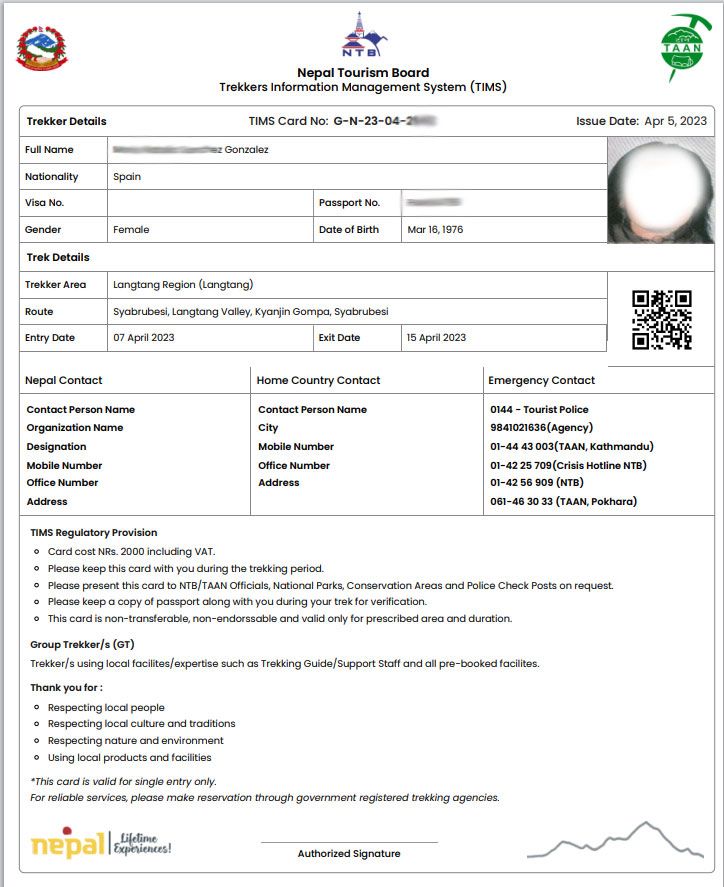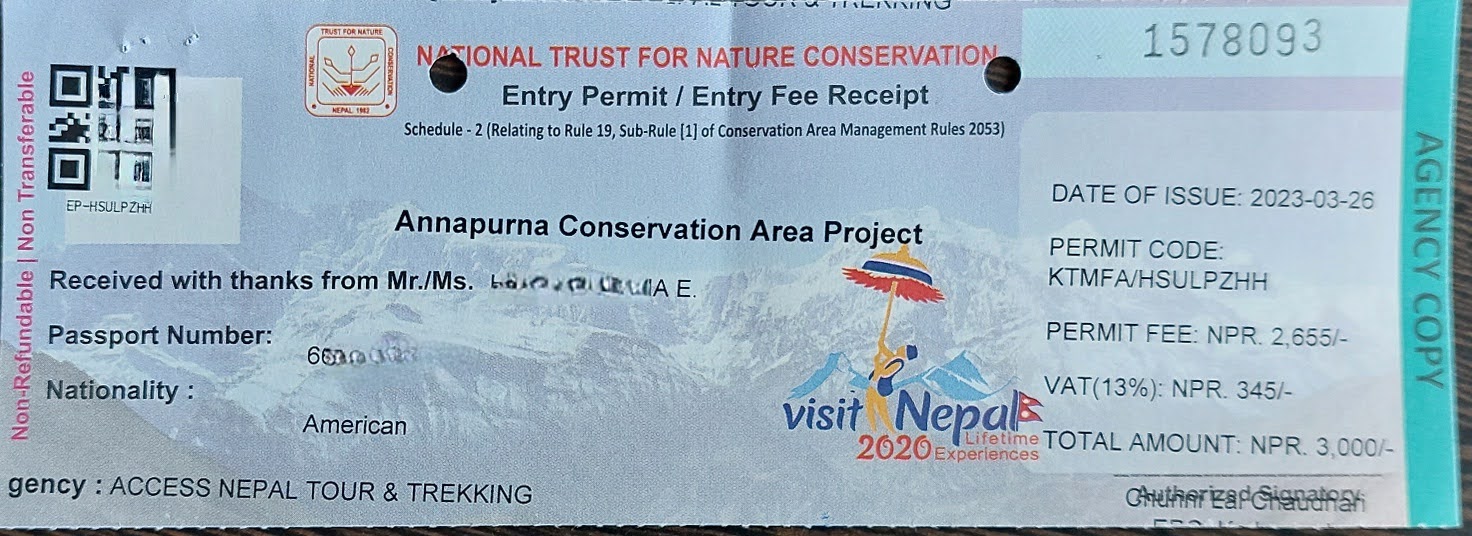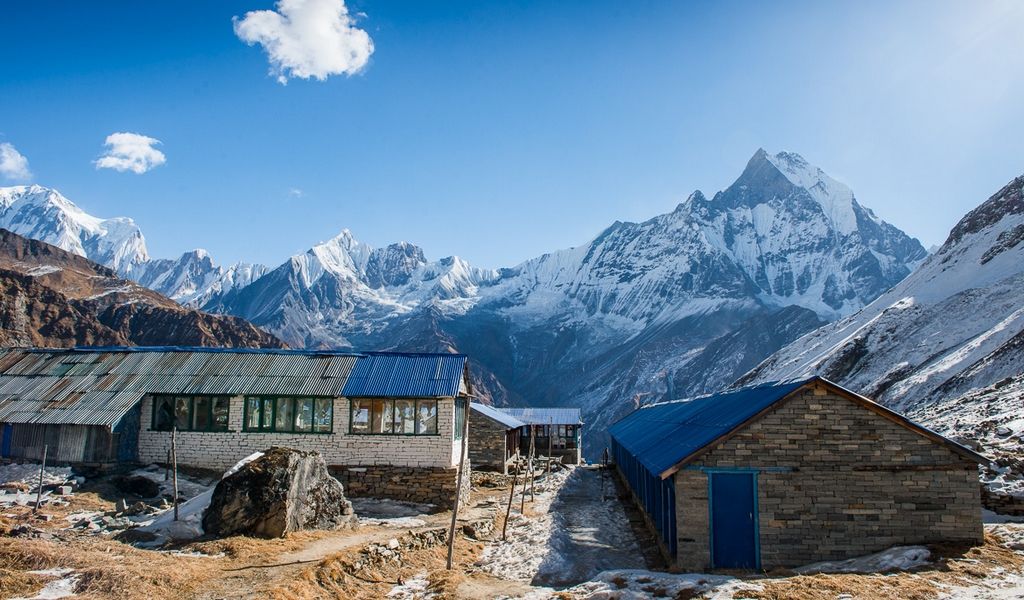Nepal is home to some of the world’s most spectacular trekking routes, and the Annapurna Base Camp (ABC) trek is among the most popular. The trek takes you through diverse landscapes, from lush forests and terraced rice fields to high-altitude mountain passes and stunning glaciers. The ABC Trek leads you to the base of Annapurna (8091 meters), the tenth-highest mountain in the world.
It is essential to obtain the necessary permits to ensure a safe and legal trekking experience. Moreover, the permits also help conserve the region’s biodiversity, natural beauty, and culture. Annapurna Base Camp Trek requires two permits: the Trekkers’ Information Management System (TIMS) permit and the Annapurna Conservation Area Permit.
TIMS Permit

The Trekkers’ Information Management System (TIMS) is a permit implemented by the Nepal Tourism Board and Trekking Agencies Association of Nepal (TAAN) in 2008. The TIMS permit helps to ensure the safety and security of trekkers in Nepal. Likewise, the permit helps regulate trekking activities and trekker’s movements in the trekking areas.
All foreign trekkers wishing to trek in the Annapurna region, including the ABC trek must carry the TIMS permit. The permit helps the authorities keep track of the trekkers. Similarly, the permit also assists during rescue situations in the event of any unforeseen circumstances, such as natural disasters, accidents, or health emergencies.
Cost of TIMS Permit
To obtain a TIMS permit, trekkers must fill out an application form with their details, a trekking itinerary, and a passport-size photograph. The cost of the TIMS permit varies on the nationality of the trekkers. It costs NPR 1,000 for SAARC nationals (Afghanistan, Bangladesh, Bhutan, India, Maldives, Pakistan, and Sri Lanka) and NPR 2,000 for other nationals.
How to Obtain TIMS Permit?
Trekkers can obtain a TIMS permit through TAAN (Trekking Agencies Association of Nepal) office or the Nepal Tourism Board’s office in Kathmandu or Pokhara. One can get the permit on the same day of application.
ACAP Permit
The Annapurna Conservation Area Project (ACAP) was initiated in 1986. It is NTNC (National Trust for Nature Conservation)’s biggest project to date. ACAP has a total area of 7,629 sq. km. and is home to 100,000 inhabitants from various ethnic and linguistic groups. Correspondingly, it is also Nepal’s first conservation area and largest protected region. Annapurna Conservation Area Project (ACAP) implemented the permit to conserve natural beauty, biodiversity, and culture of the Annapurna region. The ACAP permit is mandatory for all trekkers who wish to trek in the Annapurna region, including the Annapurna Base Camp trek.

The Annapurna region is a protected area, and the ACAP permit helps to regulate the number of trekkers, minimize the environmental impact, and raise funds for the conservation and development of the region.
Cost of ACAP
The permit fee is NPR 3,000 for foreign nationals, NPR 1,000 for SAARC nationals, and NPR 100 for Nepalese citizens.
How to Obtain ACAP?
Trekkers can visit the Nepal Tourism Board’s office in Kathmandu, Pokhara, or ACAP office in Pokhara for the permit. Trekkers must fill out an application form with their passport details, a trekking itinerary, and a passport-size photograph.
Alternatively, trekkers can obtain an ACAP permit through authorized trekking agencies, who handle the paperwork and other formalities. The permit is usually issued on the same day of application. trekkers must carry it at all times during the trek.
What to Expect During Your Trek with ABC Trek Permits?
An ACAP permit grants you access to most of the trekking regions in the Annapurna Conservation Area, except the areas deemed as restricted. The entry permit is valid per person, per single entry. The Upper Mustang and Nar-Phu Valley regions are restricted areas in the Annapurna Conservation Area. So, it requires special restricted area permits to access.
Benefits of Obtaining a Trekking Permit
Obtaining the necessary permits for the Annapurna Base Camp trek offers several benefits for trekkers:
- The permits help to regulate the number of trekkers, ensuring less crowded trails and unburdened environment.
- The fund collected from the fees go towards the Annapurna region’s conservation and development efforts. Thus, you are helping to conserve the natural resources of ACA for the benefit of present and future generations.
- Furthermore, the funds bring sustainable social and economic development to the local people. It will also develop tourism with a minimum negative impact on the natural, socio-cultural and economic environments.
- The permits help to ensure the safety of trekkers by providing authorities with information on the trekking routes and the trekkers themselves.
Rules and Regulations
While trekking in the Annapurna region, trekkers must follow specific rules and regulations to ensure their safety and minimize environmental impact. Here are some of the most important rules and regulations that trekkers need to be aware of:
- Trekkers must always carry permits with them while trekking.
- Make sure you obtain the trekking permits before starting the trek.
- Trekkers must follow the designated trekking routes and avoid venturing off the trails.
- Trekkers must not litter or dispose of waste in the trekking area other than designated areas.
- Camp only in designated camping sites.
- Trekkers must respect the local culture and traditions and refrain from any behavior that could offend the locals.
- Trekkers must always follow the instructions of the trekking guides and authorities.
Conclusively, while obtaining the necessary permits and following the rules and regulations may seem like a hassle, it is a small price to pay for the privilege of experiencing the Annapurna region’s natural beauty and cultural richness. Additionally, adhering to rules ensures the sustainability of tourism in the region, which benefits both trekkers and the local communities.

